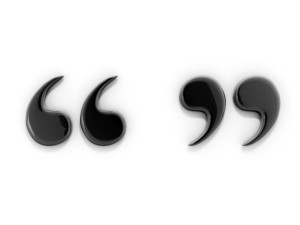Metaphoric Blogging for Business

“Are you playing with a full deck?” Mensa’s Richard Lederer asks, jokingly referring to the “combination of genetic and environmental roulette” that has Mensans ending up smart as whips, with others at the “short end” of the intelligence “stick”.
In the very funny article “Are You Playing With a Full Deck?” Lederer lists categories of metaphors used to describe those of lesser intelligence. Lighting metaphors include “He’s a dim bulb in the marquee of life”, “The lights are on, but nobody’s home”, and “She’s so dumb, her psychiatrist carries a flashlight.” Nautical metaphors include “He doesn’t have both oars in the water” and “She’s a submarine with a screen door.” There are plenty of food metaphors, including “He’s one pickle short of a full jar” and “She takes an hour to cook Minute Rice.” There are building trade metaphors such as “Her driveway doesn’t reach the road”, and “He has a room for rent.”
Metaphors don’t need to be funny to be useful in business blog content writing. Most business owners and professionals can think of quite a number of things they want to convey about their products, their professional services, their industry, and their customer service standards. Still, I’ve found over the years, the problem is those ideas need to be developed into fresh, interesting, and engaging content marketing material. By adding metaphors, you can help readers “appreciate the information picturesquely”,
In SEO-conscious marketing blogs, one technique to engage readers is building a blog post around an unlikely comparison in order to explain an aspect of their business or professional practice. For one thing, suggesting a totally new way of using your product or service through an “off-the wall” comparison may open up new possibilities for that potential customer to do business with you. Given the short attention span of the typical web searcher, putting elements together that, on the surface, don’t seem related can be a good teaching tool.
The caution with metaphors and other figures of speech, however is this: We can inadvertently puzzle readers is by using allusions where the reference is unfamiliar to them. If we allude to a person’s or an organization’s “Achilles’ heel”, for example, we need to be pretty sure our readers’ level of education will allow them to know what we mean. If we miscalculate their ability to recognize the allusion, the danger is they’ll find our content frustrating rather than illuminating.
The idea behind “metaphoric blogging”, of course is to engage, interest, and even amuse your readers, using metaphors and other figures of speech to “change things up” while at the same time making yourself clear.




 How good an idea is it to use quotations in your business blog? Very good, once you allow for certain caveats. You can use a quote to:
How good an idea is it to use quotations in your business blog? Very good, once you allow for certain caveats. You can use a quote to:
Follow us online!